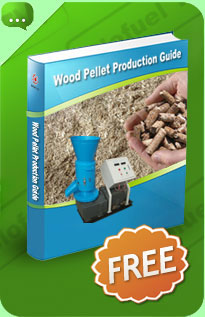Wood Pellet Mill Machine
Making Wood Pellets
How to make wood pellets depends a little on the scale of the operation. When making wood pellets on a large scale, the raw material enters the wood pellet mill machine at a pre-defined moisture content and temperature. The high operating temperature (220 degrees) allows the lignin to bind the pellet.
On a smaller scale, steam, moisture and vegetable oil may need to be added to allow the pellets to bind. Vegetable oil is also used to lubricate the pellet die.
Sourcing the Raw Material
The best situation would be to find a manufacturer in your area using seasoned wood, and keeping the sawdust dry until disposal. Getting rid of the waste probably represents a cost, so if you arrange a regular collection it might be possible to obtain the raw material free.
If the sawdust is dumped outside and not under cover it will need to be dried to a moisture content of 10 to 20% by weight.
Other sources of raw material to make wood pellets are wood chips, shaving or off-cuts, but these will need more initial processing before pelletizing.
The first step is to reduce whatever pellet material you use to a granular form, (if using natural wood it will need de-barking for premium quality pellets). Unless you're lucky enough to have a supply of fine sawdust, this is usually done with a hammer mill, a shredder, or a granulator.
The Wood Pellet Mill machine
It may not be necessary to buy your own wood pellet machine for making wood pellets. An Animal feed mill, or a grass mill can be used to make wood pellets when not being used for its primary purpose.
Associated machinery such as driers and packaging will already be in place. A grass mill in particular is very similar to a wood pellet mill machine and usually is unused from November to March, when demand for wood pellets is high.
If you decide to buy your own pellet machine to make wood pellets, there are a few things to consider. They are:
The amount of pellets you want to produce,
How much raw material you can source,
Whether or not you want to automatically introduce steam, water, binding agents, or vegetable oil, (lubrication).
Feed rate for sawdust.
Intermittent or continuous operation.
In the production of wood pellets, the introduction of binders and moisture depends on the type of pellet material available. Hardwood material often requires some oil to help flow through. Dry sawdust can need moisture adding either as water or steam. Oil can help with the flow of damp material.
As a general rule, output from softwood will be double that of hardwood.
Pellet Mill Economics
The dies and rollers of a wood pellet mill machine have to be treated as consumables in your costing, along with power, raw material, bags and others.
Dies and rollers have a life span that depends on the type of material you are processing. A very rough estimate is that molds and dies are good for 180hrs. of use. Good maintenance can increase this. It's important to factor this into your costs, finding out how much consumable machine parts will be.

